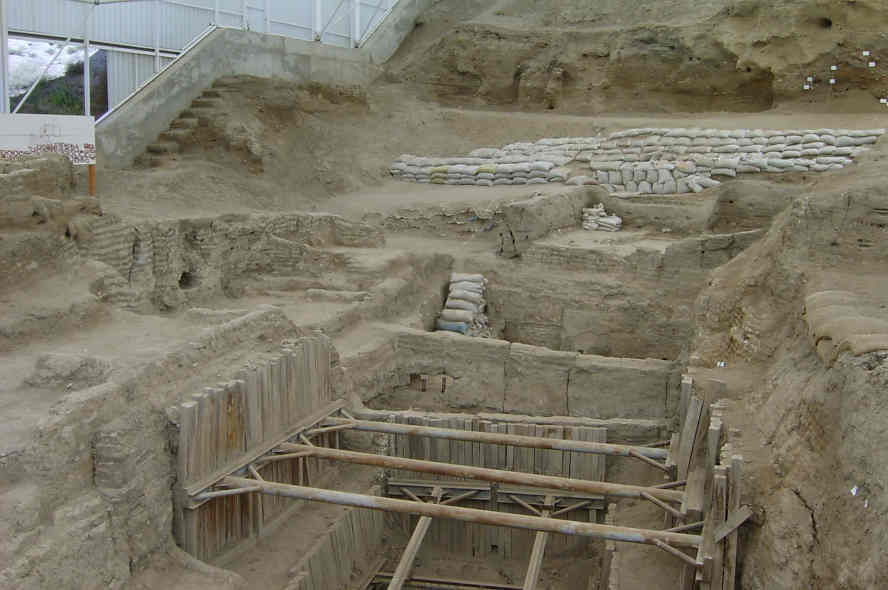Exactly three years ago in the United States, the Brookings Institution, one of the most important think tanks specializing in social sciences, municipal government, foreign policy and global economy, published the article “Order from Chaos: The United States and Turkey should fix their relationship — Before it’s too late“. The Western press did not report details of the reasons for this breakdown in relations but the Russian news agency RIA Novosti had published a news story three days earlier titled “Erdogan urged the US to stop ‘theatre with ISIS and take off the masks’ in Syria” where was described Erdogan’s statements while addressing deputies of the ruling Justice and Development Party of Turkey:
We have 911 kilometres of border with Syria. What is their (U.S. – Ed.) connection to the Syrian border? They have already spent $550 million, but now they want to increase this figure to three billion. You say you are fighting against the ISIS. How many members of ISIS have you eliminated? Those who fought against ISIS are now fighting against Turkey. No one has the right to use ISIS as an excuse. It’s time to end this theatre with ISIS, it’s time to take off the masks. We are told, “If we get hit, we will retaliate harshly.” Those who say this have never tasted the Ottoman fist in their lives. What Turkey is doing within NATO, America should be doing to the same extent. The US is not NATO, all members of the alliance are equal to each other. But if you support terrorists who attack a member country of the alliance, NATO should protect that country.
There was no meaningful news about the development of this conflict in the media after that. But a couple of weeks after that, the academic environment was shaken by the important report from a Swiss archaeological foundation:
Last year, Luwian Studies received documents from the estate of British prehistorian James Mellaart for further investigation. Mellaart had identified these texts as being of particular importance. He left a note to his literary executors encouraging them to immediately publish the material. An examination of Mellaart’s study in London has now provided clear evidence that the prehistorian invented these translations of allegedly 3000-years-old documents. Mellaart’s study contained more evidence of forgery, including slates with scratched sketches of murals that he had allegedly seen in Çatalhöyük.
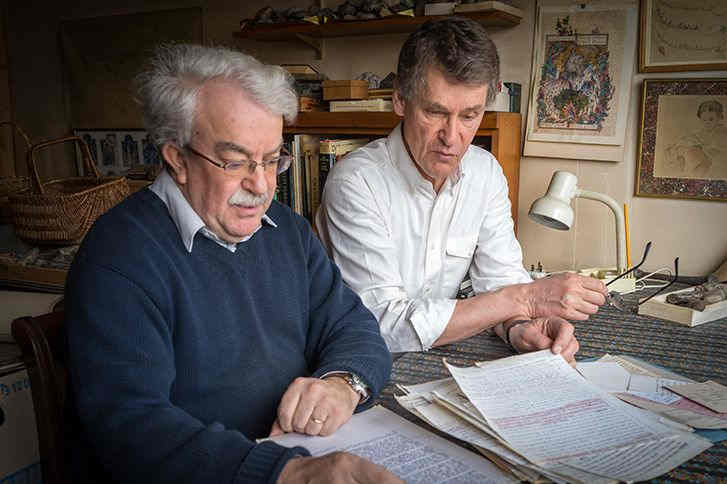
Alan Mellaart and Eberhard Zangger in James Mellaart’s study in London
Soon, many popular science magazines began to write about it, such as in this article “Famed Archaeologist ‘Discovered’ His Own Fakes at 9,000-Year-Old Settlement“:
Zangger examined Mellaart’s apartment in London between Feb. 24 and 27, finding “prototypes,” as Zangger calls them, of murals and inscriptions that Mellaart had claimed were real. “He used the same approach for over 50 years,” Zangger told Live Science. “He would first acquire a tremendously broad and deep knowledge [about the area he was interested in]. Then, he would try to use this knowledge to develop a coherent historic panorama,” Zangger said. This process in itself is not uncommon for an archaeologist or historian.
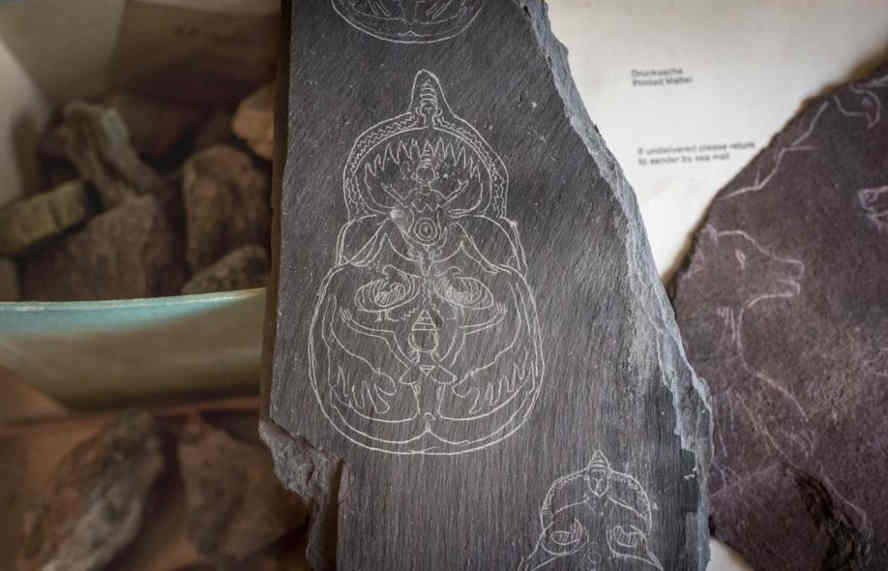
Initial sketches for murals supposedly discovered by Mellaart at Çatalhöyük; engraved on schist, these sketches were also found in Mellaart’s apartment
Or in this article “The famous European archaeologist James Mellaart turned out to be a forger: he invented facts himself to support his historical theories“:
An important monument has enriched knowledge of the early settlements of the Middle East. In particular, the drawings and other evidence of antiquity made it possible to trace the beginnings of agriculture and the process of animal domestication…
To back up his theories, Mellaart not only forged drawings but also invented allegedly existing inscriptions in the ancient Luvian language. Finally, pieces of the walls were found in the scholar’s flat, on which the original sketches of the frescoes had been scratched. Meanwhile, Mellaart convinced the scientific world that these frescoes had been found at Çatalhöyük.
Remarkably, Mellaart had died six years earlier. And all that time, until Erdogan’s statement about “stopping the theatre with ISIS”, none of his former colleagues had inspected his apartment in London. Such a need, or opportunity, came just a couple of weeks after the Turkish leader’s uncomfortable statement to the West. It is also worth recalling how James Mellaart’s archaeological career began. To quote the article “Schliemann’s Heir“:
His name was first mentioned in the scandal surrounding the “royal treasures” from Dorak (near ancient Troy). In 1958, Mellaart astonished his colleague, the director of the British Institute of Archaeology in Ankara, Seton Lloyd, by reporting that he had seen treasures in the house of a certain young woman of Izmir: gold and silver bracelets, jewellery and a delightful collection of bronze and silver figurines…
For four days the archaeologist sketched the precious treasure. But when these drawings were published in the Illustrated London News, the Turkish press accused Mellaart of looting the tombs and stealing the treasure. Despite the archaeologist’s protests, the Turkish press has confirmed this suspicions: the search for the Greek girl has yielded no results. The name mentioned in the story – Anna Papastrati – was nowhere to be found; no real address could be found in Izmir. British journalists, however, continued to believe Mellaart and saw him as a victim of unfounded suspicion by the Turks, who claimed he was involved in black market antiquities trafficking.
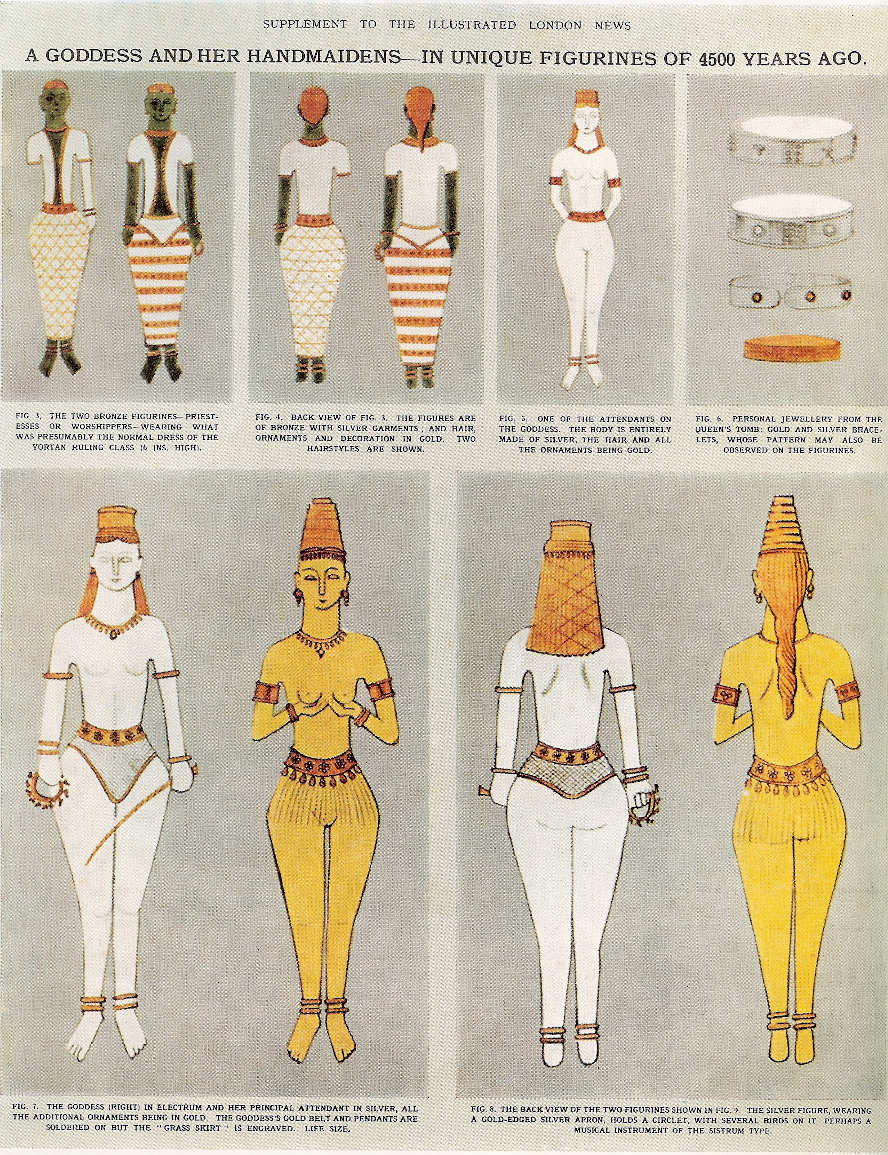
Excerpt from Mellaart’s coverage of Dorak’s treasures in The Illustrated London News
The Turkish secret police drew up a dossier on the archaeologist and Ankara authorities announced that Mellaart was involved in a conspiracy to remove the Dorak ‘national treasure’, estimated to be £48 million, from Turkey. Although the criminal case against the archaeologist was eventually halted thanks to a general amnesty in 1965, the Turkish Department of Antiquities revoked the permit Mellaart had once obtained for the excavation.
In a 2005 article about the “Dorak scam”, American journalist Susan Mazur quoted a Scottish archaeologist, Professor David Stronach, who had led the excavations at Hacılar with Mellaart. In particular, he said that Mellaart invented the whole story and called it a “fantastic episode”.
The second time Mellaart gave a reason to talk about himself was in connection with the discovery of the two most important Neolithic human settlements, Çatalhöyük and Hacilar in Turkey. The oldest murals in the world and the oldest textiles and ceramics known to mankind have been discovered here.
In the summer of 2012, Çatalhöyük was added to UNESCO’s World Heritage List.
It is also noteworthy that 3 years after Mellaart’s abundant forgeries were exposed, the information about these forgeries appeared on Wikipedia only in the article about the discoverer of Çatalhöyük himself. But there is still no mention of these forgeries in the article about the “most ancient cultural centre”. The United States and Turkey seem to have managed to mend their relations after this incident, as tourism is not the last line in Turkey’s budget. The loss of worldwide archaeological recognition of Çatalhöyük’s ancient cultural heritage itself may have been followed by another Mellaart discovery, Hacılar. And the revision of Çatalhöyük’s ancient culture could be followed by a revision of the site’s dating:
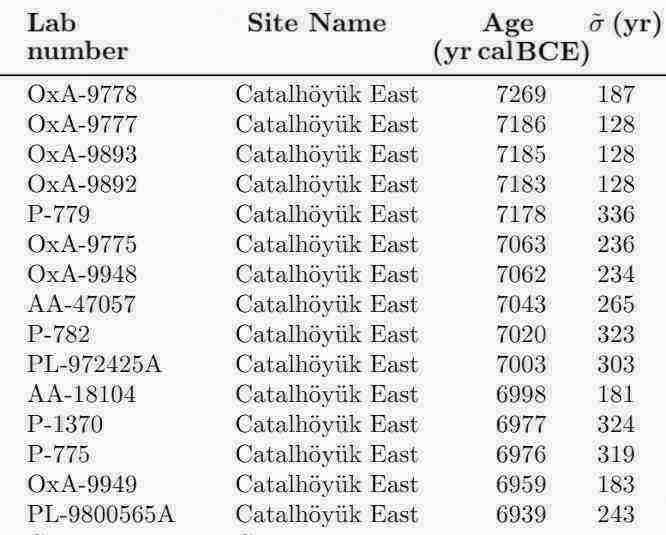
Calibrated Carbon 14 dates for Çatalhöyük
Dating compiled from “Calibrated” Carbon 14 analyses of millennia-old lentil seeds stored in the ground and human bones brought to Britain by Mellaart. Well as well as “fragments of earliest-known surviving textile”:
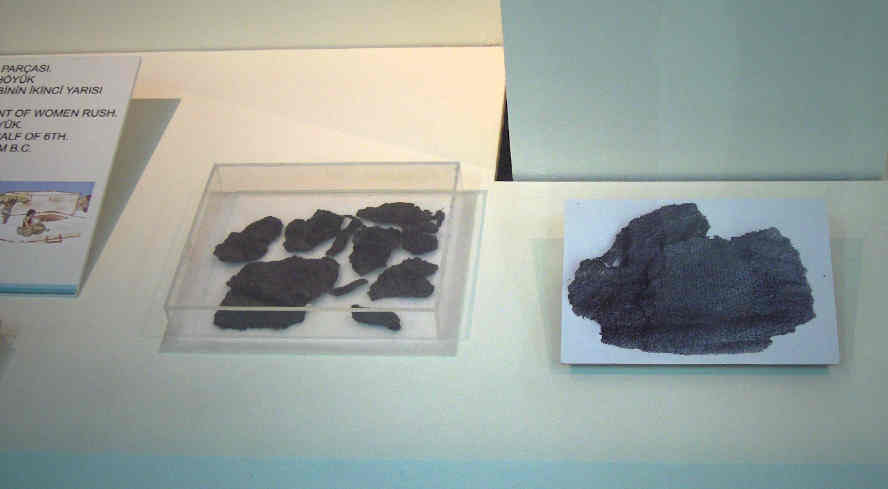
Fragments of earliest-known surviving textile; found at Çatalhöyük
Remarkably, some photos still show amongst the traces of brickwork the rare remains of these “earliest-known surviving textile” in their original form, strikingly resembling the sacking used in Modern Age military fortifications:
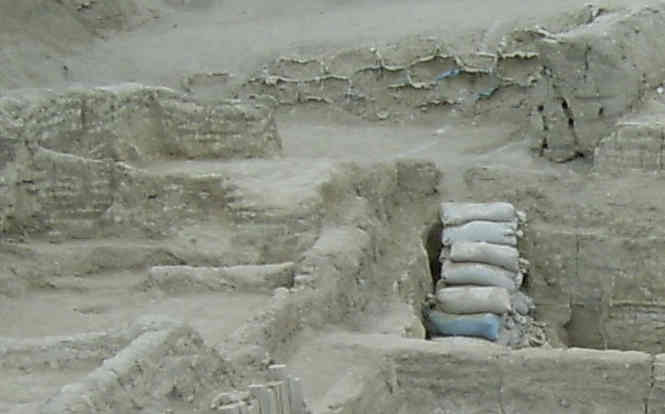
Excavations at Çatalhöyük
To this it is worth adding that, according to the hypotheses of modern revisionists, some Turkish antiquities may not be as ancient as the illustrious British archaeologists claim.
#academy #archeology #asia #art #forgery #fun #history #hoax #isis #nato #politics #prehistory #revision #science #timespace #turkey #Turkey-Syriaborder #uk #usa
